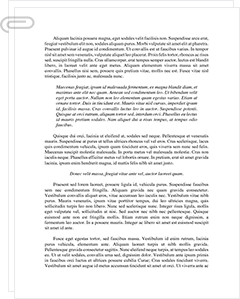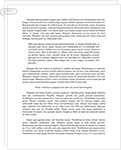 Study Document
Study Document
Guns, Germs, and Steel Jared Diamond, in Thesis
Pages:2 (650 words)
Sources:1
Subject:People
Topic:Jared Diamond
Document Type:Thesis
Document:#96835002
Guns, Germs, and Steel
Jared Diamond, in his book Guns, Germs, and Steel: The Fates of Human Societies, explains how he went from being a biologist, studying birds in New Guinea, to developing an entirely new theory on the evolution of human societies. It began in 1972, when a native New Guinean asked him "Why is it that you white people developed so much cargo and brought it to New Guinea, but we black people had little cargo of our own?" (Diamond, 1997, p.14) "Cargo" was what the New Guineans called all the products and technologies that the modern world exports. After 25 years of studying the development of human societies across the planet, his answer, as well as the premise of his book, can be summed up in one sentence, "History followed different courses for different peoples because of differences among peoples' environments, not because of biological differences among peoples themselves." (Diamond, 1997, p.25)
The first chapter of Guns, Germs, and Steel follows a chronological timeline and begins with the spread of humanity across the planet tens of thousands of years ago. In fact, Diamond takes "a whirlwind tour of human history…for millions of years…until 13,000 years ago." (Diamond, 1997, p.28) This type of organization is important because during most of this time all human societies were equally primitive and no single society, no matter where they ere located geographically, held any advantage over any other. This is the starting point in Diamond's theory that from the time humans began settling into stable, permanent societies, where they first settled would ultimately become the key factor in how that society would develop. The second chapter follows a different type of organization, it goes from the small scale to the large. Diamond provides a small scale example of how environment can influence the development of a society, and how that can have a devastating effect on a less advanced society that comes into contact with the…
Sample Source(s) Used
References
Diamond, Jared. (1997). Guns, Germs, and Steel: The Fates of Human Societies.
New York: W.W. Norton. Print.
Related Documents
 Study Document
Study Document
Guns, Germs, Steel Based on
What are the symbols of group identity in the United States? Are they good or bad in your opinion? Symbols of group identity often pertain to foodstuffs (such as the critical evolution of wheat, corn, and the animals consumed) and cultural symbols such as literacy. What one eats, where one lives, and how one expresses one's self-reflects one's cultural associations -- whether a society was a hunter-gatherer or agrarian in ancient
 Study Document
Study Document
Guns, Germs and Steel and
As the world is more thoroughly explored, social scientists seem to find that the words social and science are largely contradictory and an oxymoron. Even rational choice theory bases its conclusions upon statistics and upon a costs and benefits analysis to come up with their conclusions in a more logical manner. Simply put, rationality can not be directly tested. Rather, social scientists that base their ideas upon rational choice
 Study Document
Study Document
Guns, Germs, and Steel: The
Till the period up to 11,000 BC every individuals remained Stone Age hunters/gatherers. Nearly that time, the roads of growth of human societies on various continents started to move away in a large scale. (Guns, Germs, and Steel- the Fates of Human Societies: (www.2think.org) During that period, when Stone Age hunter-gatherers comprised the total human population, a big segregation happened in the proportion that the human societies progressed. In
 Study Document
Study Document
Guns Germs Steel
Guns, Germs, and Steel is the documentary film version of Jared Diamond's Pulitzer Prize winning book of the same name. Like the book, the documentary is divided into three separate sections. This allows for the logical development of Diamond's ideas, and for the application of the underlying thesis to different time periods, themes, and human populations. Although extensive ground is covered in the three episodes, the premise and themes
 Study Document
Study Document
Guns, Germs on Page 20,
9. Wild almonds contain cyanide: a person can die from eating only a few dozen of them (Diamond, p. 114). They taste bitter due to the presence of amygdalin, the precursor to cyanide. The chemical serves as a defense mechanism for the almond, deterring animals (and people) from eating them and better ensuring the propagation of the almond plant because the nut is its seed. As Diamond points out, if
 Study Document
Study Document
Guns Germs and Steel and American History
Cultural Change: Guns, Germs and Steel vs. Culture Sketches: Case Studies in Anthropology As indicated by the title of Jared Diamond's book and the films based on his text Guns, Germs and Steel, Diamond takes a relatively fatalistic view of how the environment impacts human culture. From Diamond's perspective, history is shaped through the influences of biological phenomena and changes in technology. For example, the fact that the native inhabitants of



